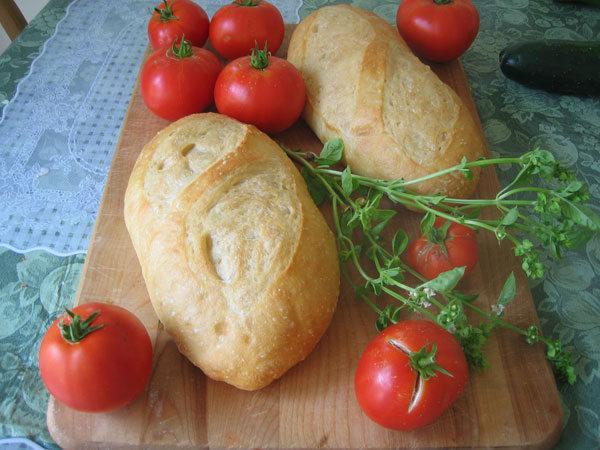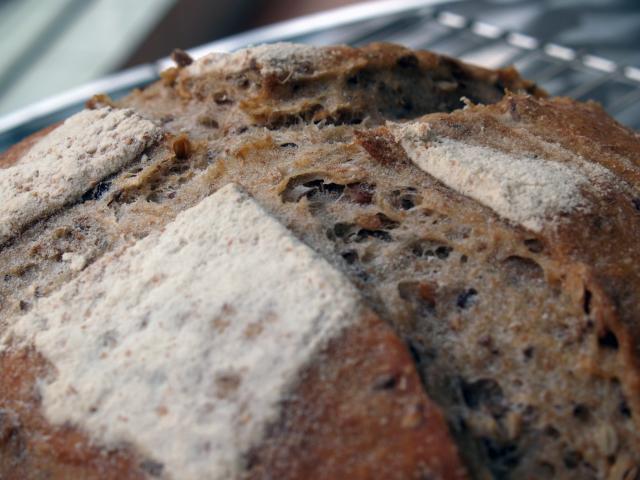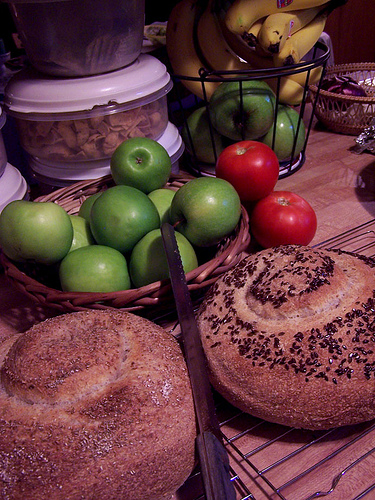My wife purchased a copy of BBA as a birthday present some weeks back and I finally got around to using a formula from the book; in this case, the New York Deli Rye sandwich loaf. It is a definite keeper. I have been admonished to put a big star next to that particular formula.
The bread is a wonderful base for a corned beef and swiss cheese sandwich, to start with. We'll keep experimenting and see what else works, too. The onions in the bread are a a delicious complement to other savory flavors, but somehow manage not to overwhelm the other components.
Since it was my first attempt for this formula, I made sure to follow the instructions closely. I opted out of the use of caraway seeds, since my wife does not enjoy that flavor. Next time I may try either dill or fennel seeds, since it seems either of those would make a good flavor complement.
The use of commercial yeast, brown sugar and buttermilk in the formula were a bit surprising. I think that the buttermilk (and the shortening) contributed to the finished bread's moistness. For the next attempt, I will probably skip the yeast. My starter seems to have plenty of boost, so the yeast really isn't necessary to ensure an adequate rise. I do need to follow some of JMonkey's recommendations for increasing the sourness of the starter. Mine is more mild than wild in the flavor department, even with having refrigerated the second build of the starter overnight. A longer, cooler rise with no commercial yeast would probably increase the sour flavor.
The other thing that I should have done was keep a closer eye on the dough during the final rise. When I came back in from some outdoor chores to check on it, it was almost 2 inches above the edge of the pan, instead of the recommended 1 inch! Warm day plus commercial yeast--who'd have thought it? Anyway, I got lucky in that there aren't tunnels and that the bread holds together instead of crumbling in the middle of the slice, like some other over-risen breads that I have made.
All things considered, this was a very satisfactory experiment with a new recipe. And it will definitely be back for an encore.













